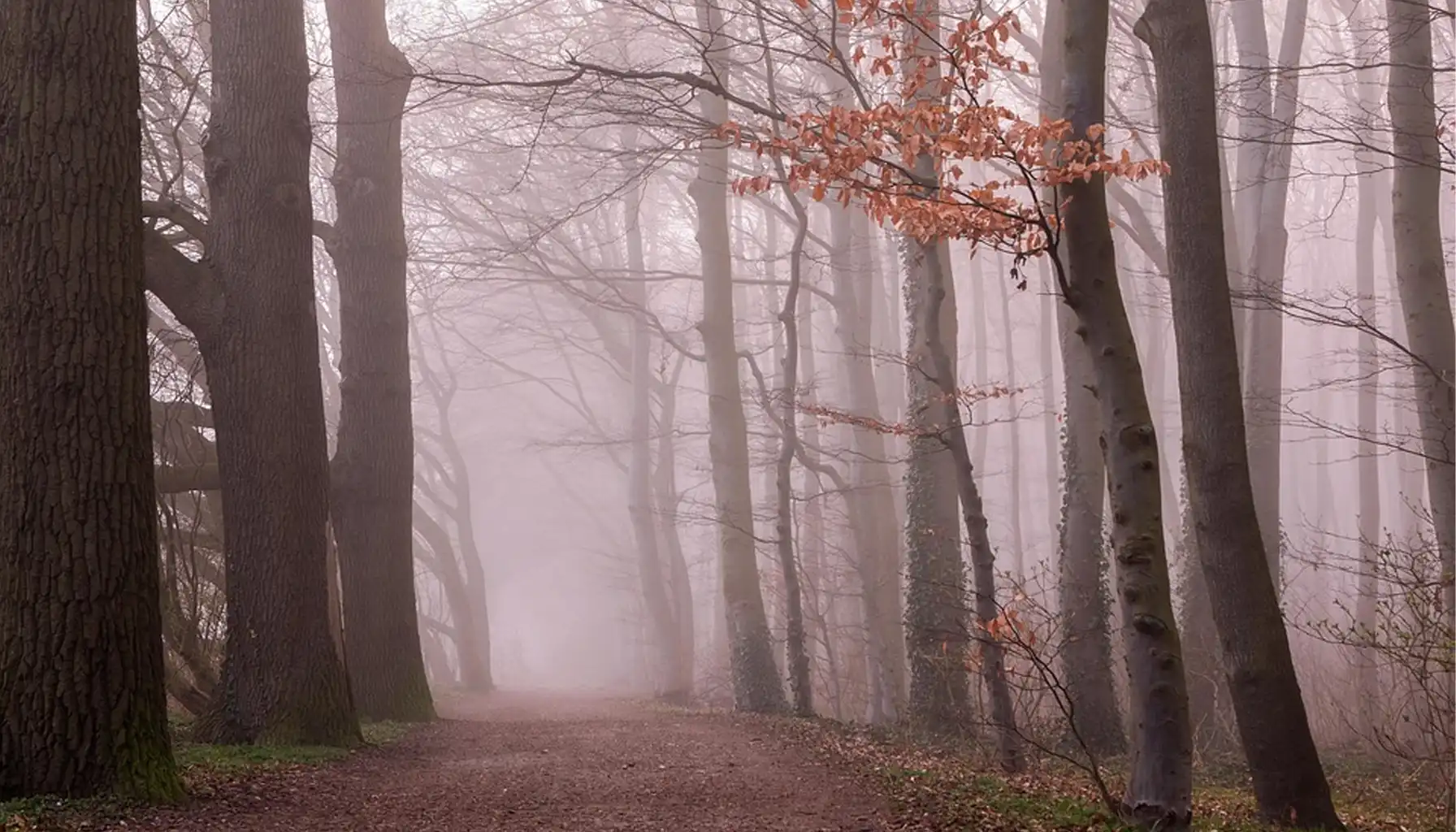Contents:
Not all fears are associated with real threats. Some take root in the imagination and begin to take over everyday life. This includes dendrophobia, an uncommon yet deeply unsettling fear of trees. It can manifest itself not only as anxiety, but also as panic, avoidance of walking, and avoidance of relaxing in nature.
Such a reaction belongs to the category of specific phobia, and, without support, limits the quality of life. To cope with such conditions, cognitive practices are useful - for example, regular brain training exercises through apps like Mind Elevate, which help strengthen attention and stress resilience.

Definition and Core Meaning
The term has Greek roots: "dendron" - tree, "phobos" - fear. In a clinical sense, it describes an excessively strong fear that arises when seeing or thinking about trees.
Dendrophobia Meaning in Clinical Practice
Medical practice shows that people who have encountered this condition may see ordinary walks in the park as a source of threat. For some, this is associated with the image of “hidden dangers,” for others, with associations from past experience.
In any case, this is not ordinary anxiety, but a pathological reaction that falls under the criteria of DSM-5.
Dendrophobia in Psychology Explained
When considering the dendrophobia definition, it’s important to emphasize the difference from everyday fears. Here we are talking about a reaction accompanied by physiological changes: increased heart rate, sweating, tremors. Such vivid symptoms often make a person pull back from others.
What Causes Dendrophobia?
Scientists agree there isn’t one clear reason that explains why this fear develops. More often than not, it’s a combination of several factors:
Past experiences. A strong storm, the sound of a falling branch, or a fright from an animal jumping out of the tree can remain in the memory for a long time. Such moments often become the starting point for future fear.
Family predisposition. If parents suffer from anxiety disorders or avoid the forest themselves, the child often adopts this pattern.
Learned behaviors. If a child notices that adults avoid trees or are themselves frightened, he can unconsciously adopt this belief and maintain it in adulthood.
Genetics. Some people are born with a more sensitive nervous system. For them, any stressful stimulus, including trees, is felt more intensely.
Media and stories. Horror stories with “live trees” or scary fairy tales heard in childhood easily turn into images that later return in anxious thoughts.
Sometimes, fear of heights is found alongside dendrophobia. The reason is that both reactions are associated with natural objects and a sense of loss of control: tall trees can remind you of heights, while dense forests can create a sense of threat from above. This overlap explains why some people develop several similar fears at once.
Symptoms of the Fear of Trees

Symptoms can range from mild anxiety to panic.
increased pulse, trembling, sweating;
a feeling of suffocation or shortness of breath;
dizziness or nausea;
panic attacks when unexpectedly encountering a tree;
obsessive thoughts about "impending danger".
The Fear of Trees in Everyday Settings
People with this condition may avoid even short walks in parks with lots of greenery. Some change their routes to avoid walking past alleys, and in extreme cases, they limit leaving the house altogether. These tactics ease fear briefly, but make the phobia worse later.
Interestingly, some patients have a fear of palm trees or other specific species. Associations may be related to geography, cultural themes, or personal experiences (for example, a storm with fallen palm trees).
What is the Fear of Trees Called in Culture?
In various myths, trees were seen as symbols of strength and mystery. Some people considered oak or ash trees to be protectors, while others considered them to be places where spirits or forbidden energy were hidden.
Such images continue to be actively used in pop culture. In horror films, the forest often becomes a space where the hero loses their bearings, and the trees turn into scenery for a terrifying scenario. In computer games, treetops and roots often conceal danger, creating constant tension in the player. Even in children's fairy tales, there are plots where a tree acts as a frightening character.
Triggers of the Fear of Trees Phobia
For many people, triggers are:
the sound of wind in treetops;
movement of shadows at night;
a movie with a frightening scene in the forest;
memory of a thunderstorm or storm;
the smell of dampness and foliage.
Dendrophobia Diagnosis

To answer the question from a diagnostic perspective, doctors use a clinical interview. No separate medical test exists to clearly verify this fear. The psychiatrist relies on reported symptoms, the duration of symptoms (at least 6 months), and the impact on social functioning.
Risk Factors and Comorbidities
presence of other anxiety conditions;
childhood (phobias often develop in adolescence);
being female - statistically, women are more likely to seek help;
presence of a close relative with a phobia or anxiety disorder.
Associated conditions may include panic disorder or even avoidant personality disorder, when anxiety overlaps with other behavioral and interpersonal problems.
Treatment Approaches
Exposure therapy. Gradually “getting used to” the object of fear. At first, you can look at photos or videos of trees, then go for short walks, and later — spend more time among them. This approach helps to reduce anxiety step by step.
Cognitive behavioral therapy. Working in this format teaches you to replace frightening thoughts with more realistic ones. A person stops perceiving each situation as a disaster and begins to feel that control is returning to him.
Additional options. Sometimes auxiliary methods are useful:
hypnotherapy to work through old associations;
support groups where you can share experiences and get the feeling of “I’m not alone”;
medications - as a temporary support for panic, but not as a primary treatment.
Practical Coping Strategies
To make everyday life easier, it’s useful to rely on simple but consistent steps. They don’t eliminate fear completely, but they help to regain control:
Create a predictable daily routine. When the schedule is stable, anxiety decreases, and the brain reacts less to surprises.
Prepare an “action plan” in case of panic. For example, choose a quiet place to take a break in advance or keep calming music on your phone.
Discuss fear with loved ones. Open conversations reduce the feeling of shame and give a feeling that support will be available in difficult times.
Mark progress even in small steps. Today you managed to walk along the alley - tomorrow you can try to go to the park. Keeping track of your successes builds self-confidence.
Add relaxation techniques to your daily habits. A short breathing practice in the morning or warm tea before bed helps the nervous system adapt.
Use visualization. Imagining yourself on a calm walk among the trees reduces reactivity in a real encounter.
Table: Everyday Strategies for Coping with Dendrophobia
Action | Effect |
Breathing practices | Reduction of panic intensity |
Sensation journal | Tracking progress and triggers |
Gradual walks along alleys | Strengthening the sense of control |
Communication in support groups | Reduction of the feeling of isolation |
Action plan for panic | Confidence in unpredictable situations |
Visualization of calm scenes | Reduction of anxious expectations |
Is Dendrophobia Common?
There is little direct statistical evidence. But if we consider phobias in general, about 10% of adults and up to 20% of teenagers experience them. Therefore, the answer to the question is no, it is a relatively rare form, but it does occur and can seriously disrupt life.
Long-Term Outlook

Phobias rarely disappear without help, but with therapy, the prognosis is favorable. Most patients gradually return to normal life after a course of exposure and cognitive therapy. The readiness to act and openly discuss your experiences is important.
Is a full cure possible? In psychiatry, they talk more cautiously about remission: the fear lessens in severity, and the person can again walk, drive, and relax in nature. Having both professionals and close ones by your side makes the journey feel easier, quicker, and a lot safer.





